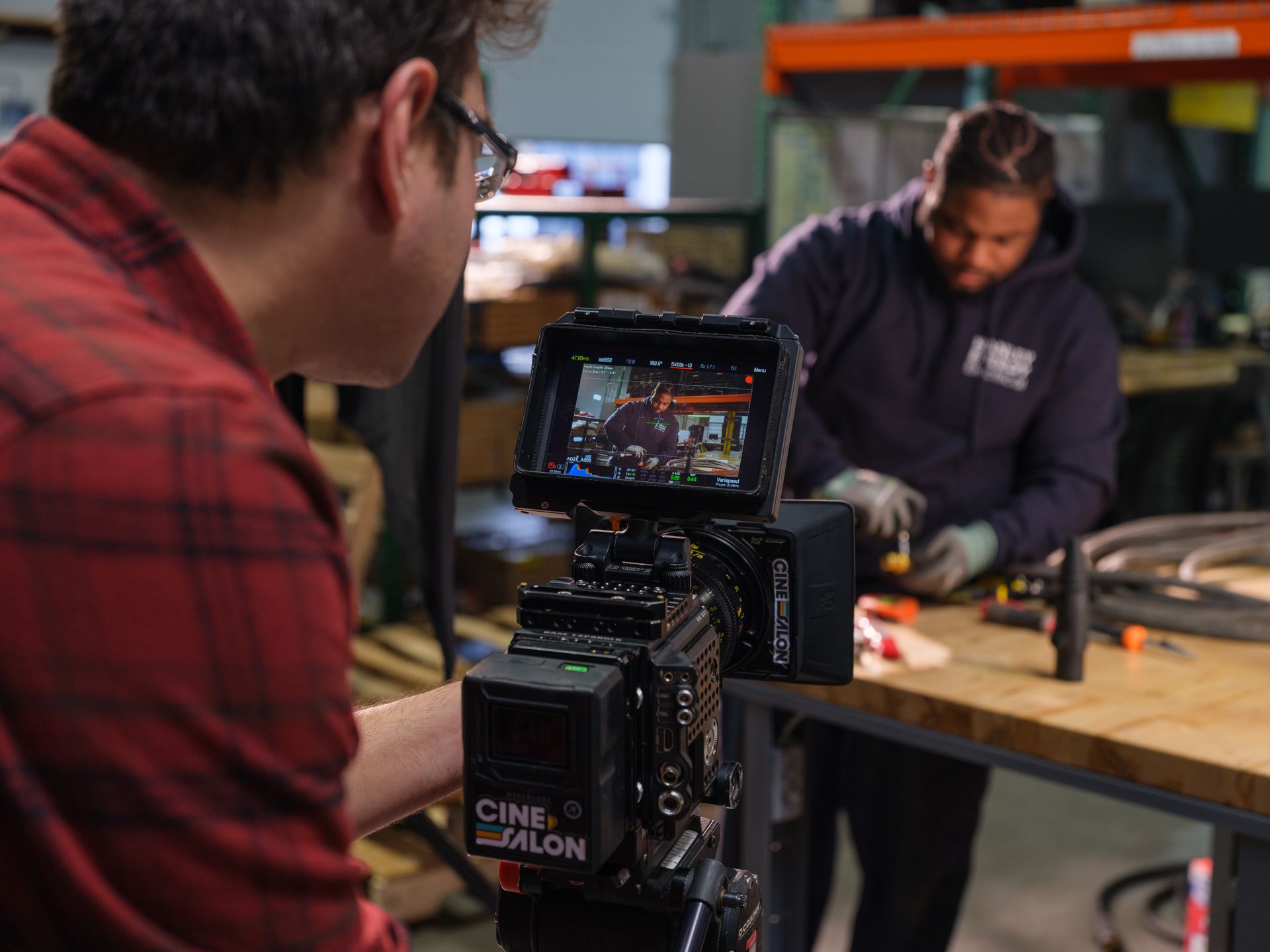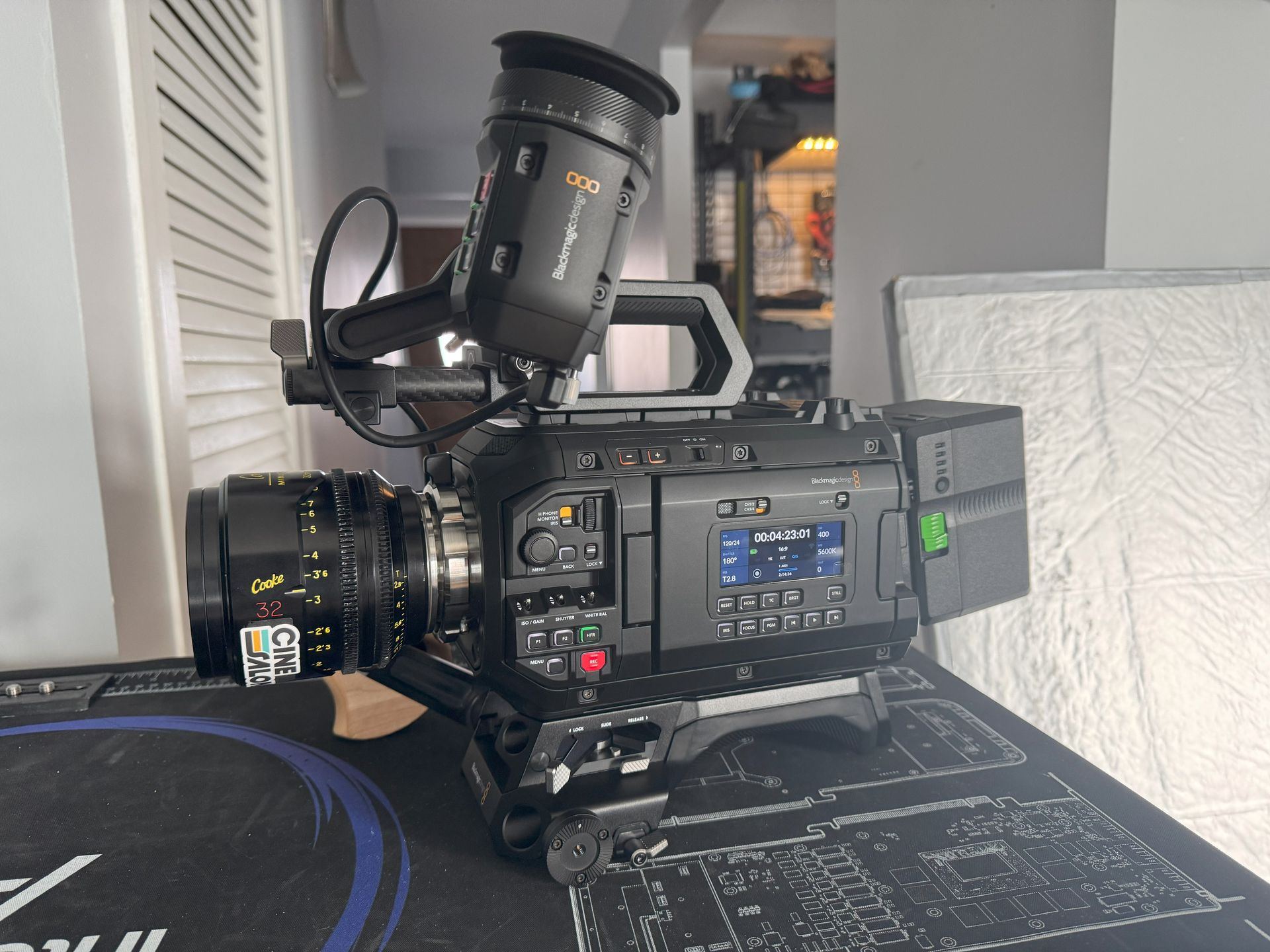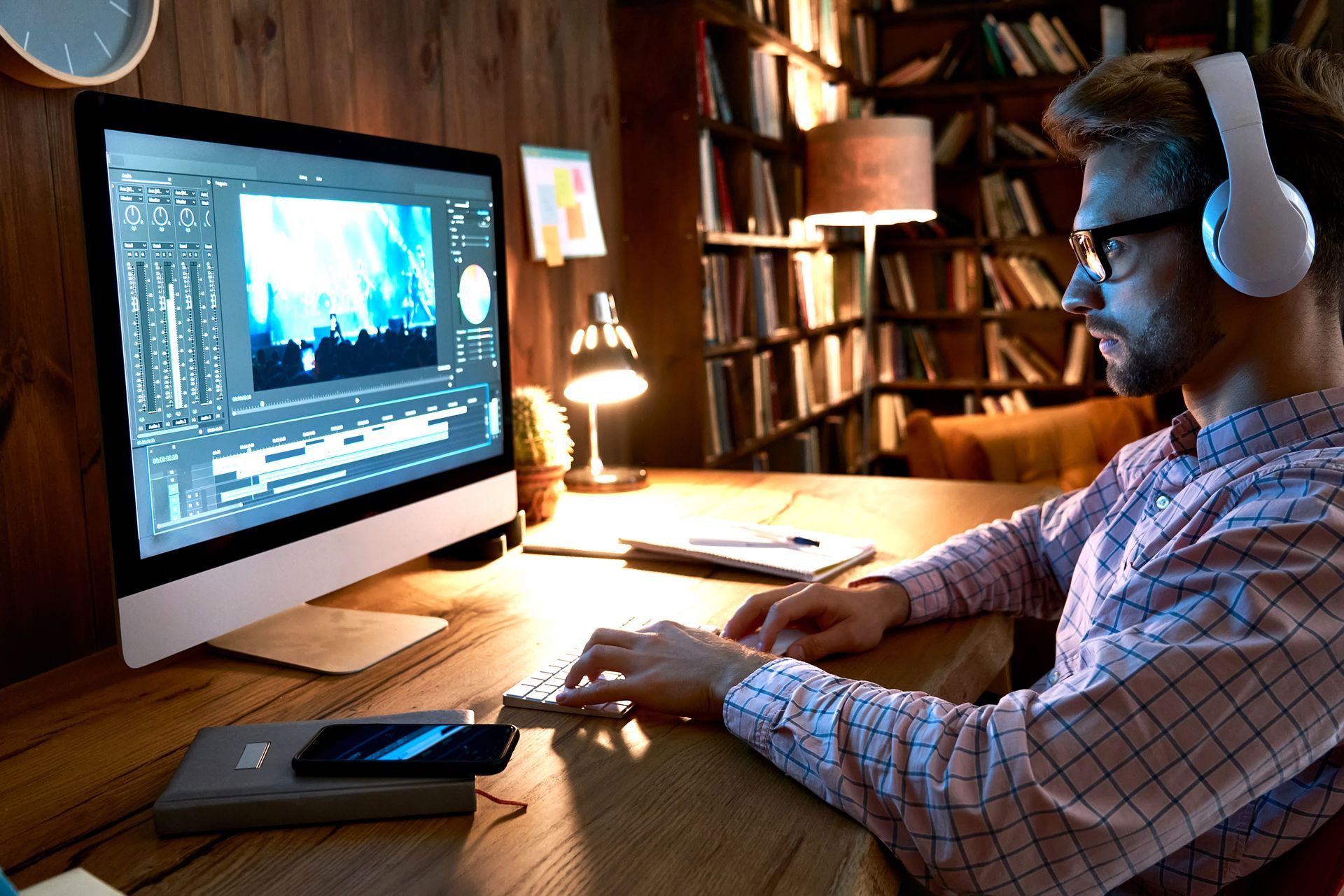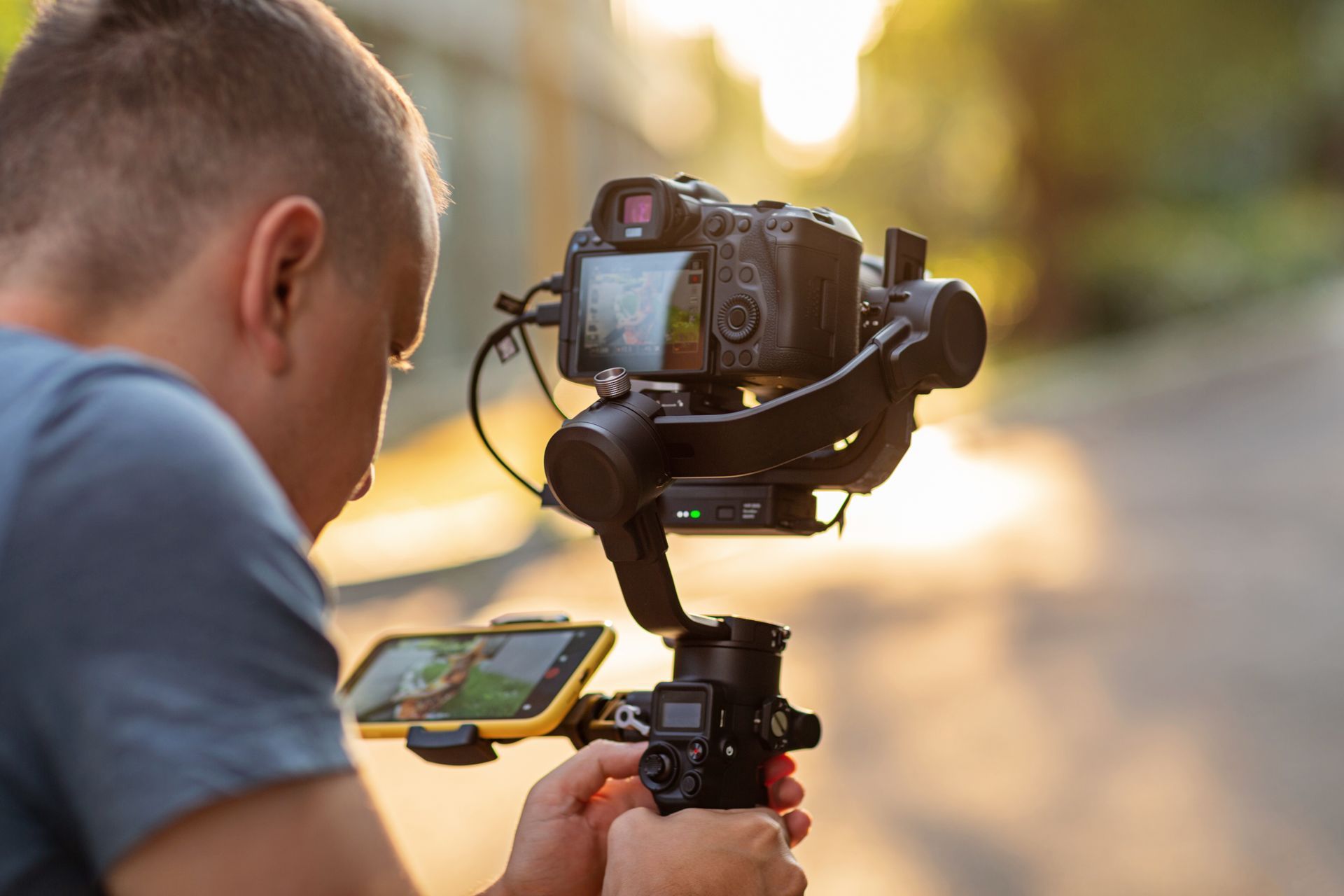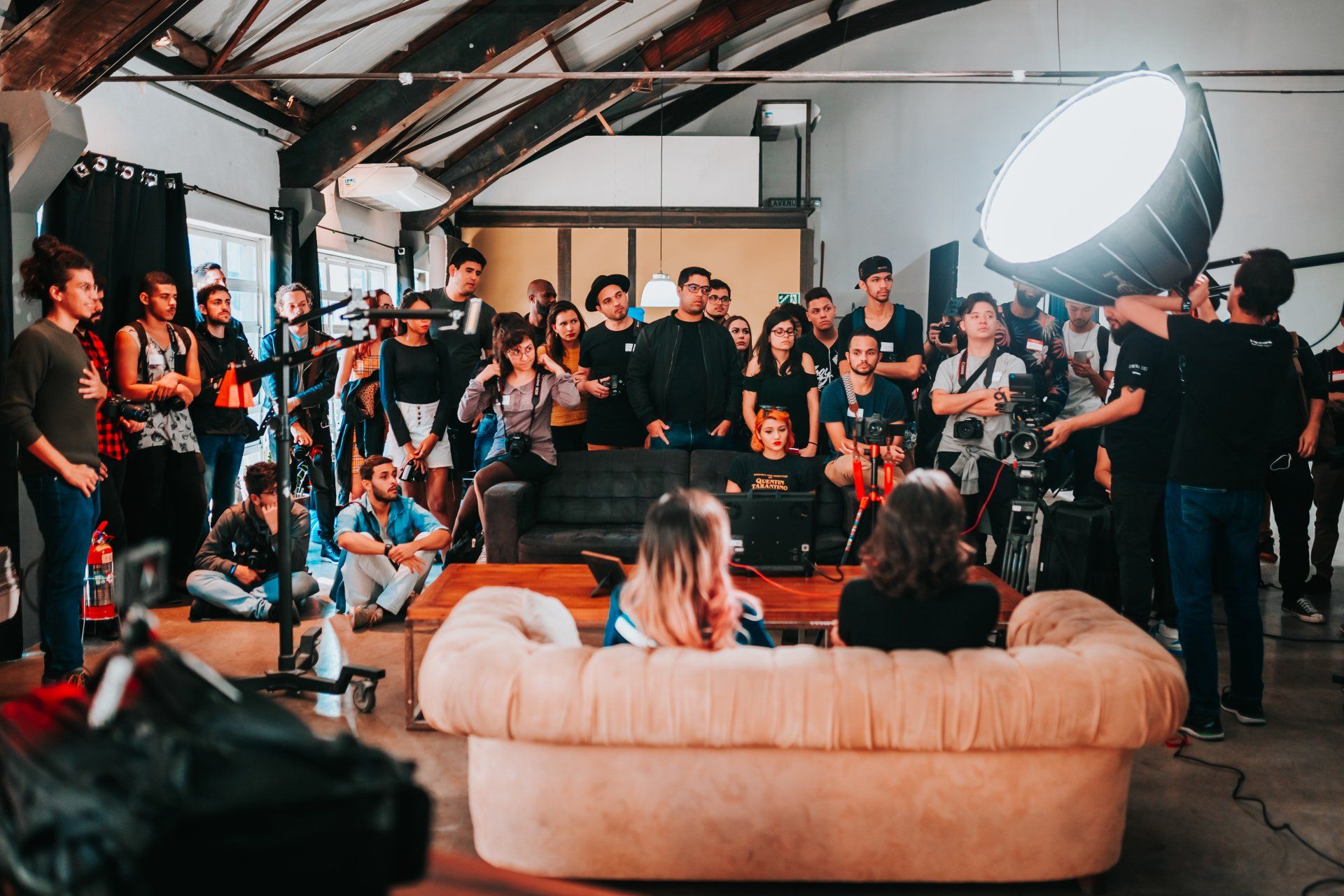
Lighting is a significant aspect of video making. It makes the right atmosphere and mood for your video. If you have good lighting, your video will look professional and engaging. This outline will discuss video lighting equipment types like softbox, ring, LED, and 3-point lighting. We will also learn how to set them up properly to make your videos look great. Let us dive in and discover how lighting can make a big difference in your video production.
Types of Video Lighting Equipment
1. Softbox Lighting
To create a soft light that enhances pictures taken during the film shooting process, hence the name soft boxes, many photographers use these fabric-made boxes that contain diffusers on one side where light is coming from inside them. The diffuser scatters the light, making it mild and consistent, reducing harsh shadows on the subjects.
Description and Function
This type of illumination helps soften or scatter any direct glare, thus making it less hard under this lighting fixture. Some materials used in producing the softbox make it easier to spread brightness evenly while toning down sharp dark areas into lighter shades, covering figures under observation by glowing softly with the natural appearance typically seen in top-quality professional portraits.
Advantages
Even Toned Camera Shots
With softboxes, there is no doubt that they result in even-toned shots that bring out the beauty of an individual being photographed. Softbox kits are ideal for photographing people and objects such as products or accessories. This is because they can help diffuse light solid sources, which produce facial shadows caused by bright sunshine outside windows onto indoor subjects.
Disadvantages
They are large
Despite its effectiveness in diffusing harsh light, softbox lighting sometimes requires more space and can be bulky compared to other lighting options.
Time-Consuming Set Up
Setting up multiple softboxes can also be time-consuming if you are a beginner. Besides, it may not always be the best type of lighting for every occasion or creative project since it does not provide some desired effects in specific artistic projects.
Example: Spectrum Illuminate Mate Kit:
This popular product is known as Spectrum Illuminate Mate kit and comes with everything necessary to create flattering soft light used in your videos. These items include softbox diffusers, adjustable bulbs, light stands, and color temperature settings.
These let you customize how strong or weak you want each part of your subject to appear when photographed with such video lighting equipment. It is a kit suitable for beginners wishing to improve video lighting set-ups with “softer” lights.
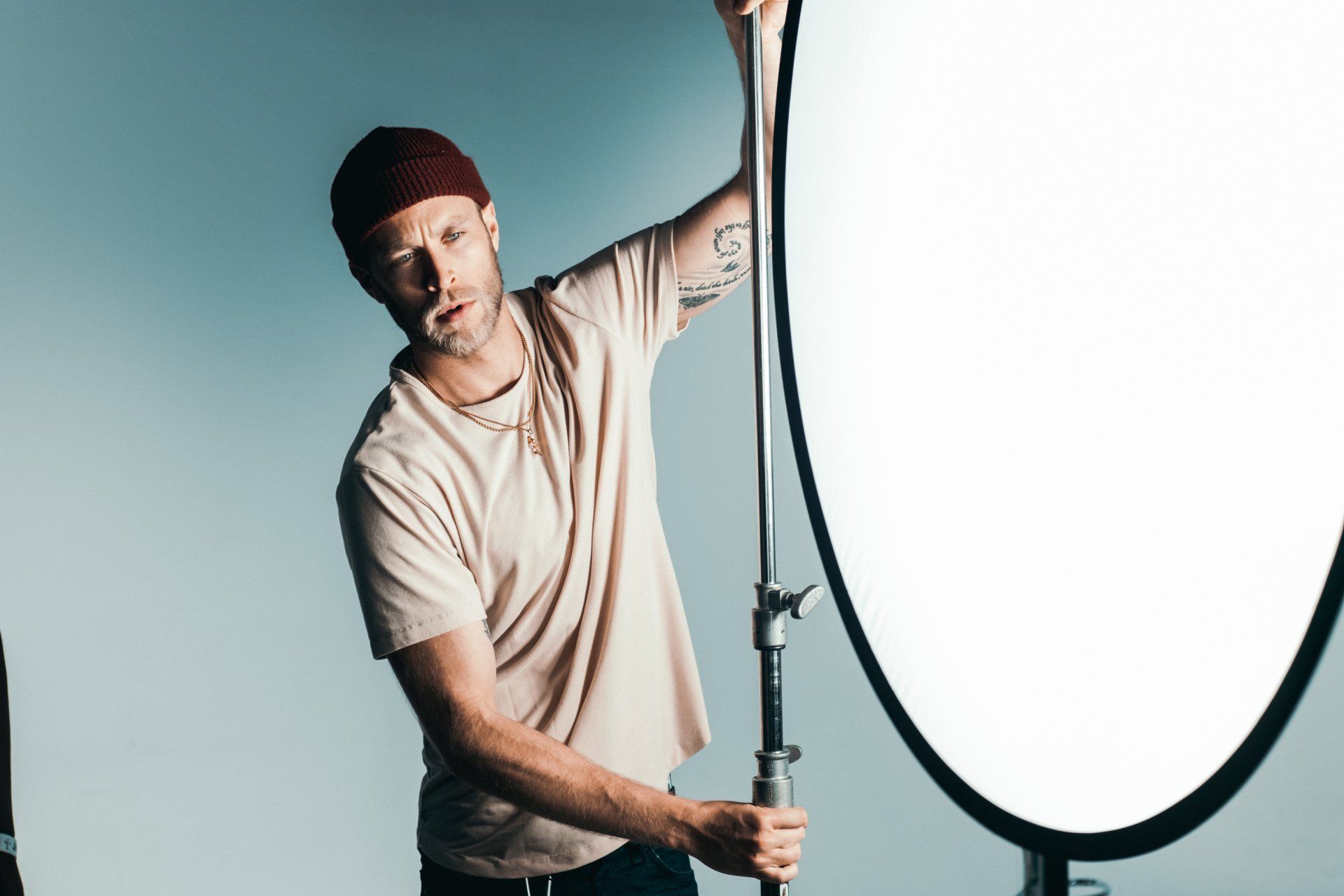
2. Ring Lighting
A ring-shaped form around the camera lens characterizes this form of illumination source, providing uniform brightness without shadows on the face. It is often positioned in front of the camera shot, allowing the subject to be well-lit.
Description and Function
Ring lights give even direct illumination that surrounds a person’s head, particularly their facial region. The circle shape helps diffuse its brilliance, producing minimal shadowing and highlighting facial features. This type of lighting is often placed right in front where images were created, capturing the whole body view and enabling even light coverage from all sides.
Advantages
Ideal for Makeup and Beauty Vloggers
It is an excellent option for beauty vloggers and content creators, usually including a ring light with adjustable brightness and color temperature settings, a tripod stand, and smartphone holders.
Examples
Neewer Ring Light Kit is easy to use and portable, making it ideal for creating professional-looking lighting setups in makeup tutorials and beauty videos.
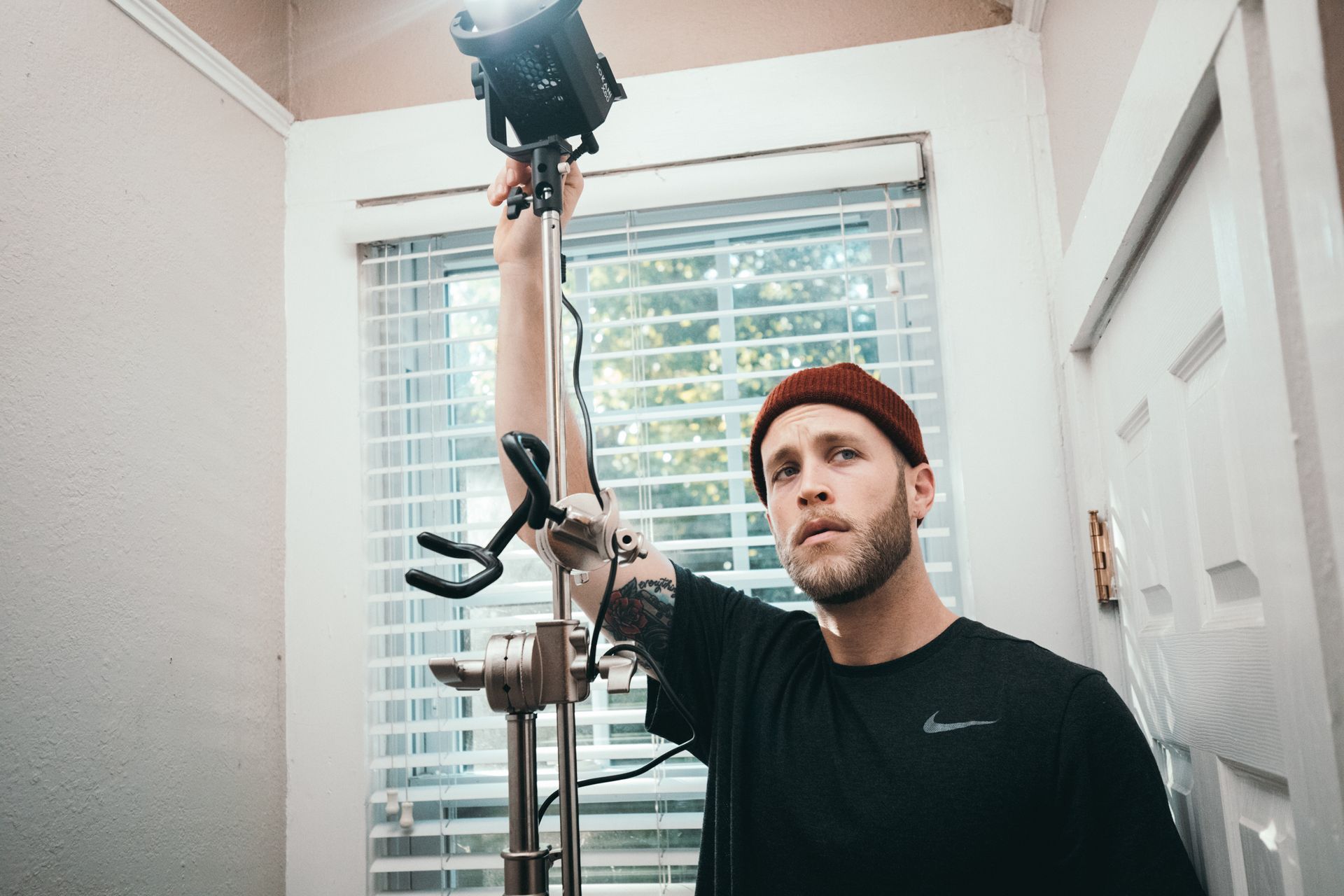
3. LED Lights
Description and Function
This lighting works through semiconductor diodes emitting light when electric current flows through them. They are known for being energy efficient, long-lasting, and providing consistent, high-quality lighting. LED panels or bulbs are commonly applied in video production to ensure even illumination of objects in sight, thus creating a well-lit surrounding.
Advantages
Easy Setup and Transport
LED lights can be quickly installed at any scene requiring shooting in diverse conditions. They are small-sized, hence portable during filming while on the move.
Customization
Besides, these lights may have customizable illumination since most models can adjust brightness or color temperature per user preferences.
Versatile for Various Setups and Preferences
Different types of LED lighting fixtures find application in many video production environments, regardless of whether the work is indoors or outside. Whether you want to set a certain mood or focus attention on particular parts of your footage, such illuminators offer flexibility crucial for adapting it to changing circumstances.
Less Power Costs
This type uses considerably less power than traditional sources, reducing heat generation while minimizing electricity bills incurred over time.
Last longer
On top of this feature, they also last longer than other alternatives and require less frequent bulb replacements.
Offer Consistent Color Temperature
They also ensure consistent color temperature plus brightness throughout every shot they are used for.
Disadvantages
Expensive
LED lights, though having many benefits, may sometimes be more expensive at the beginning, unlike other lighting equipment.
Some lower-quality LEDs can have color accuracy problems or cause flickering in certain conditions. Moreover, LED lights do not always produce a warm effect that is required for specific aesthetic purposes, as with standard incandescent lamps.
Example: Aputure AL-M9 LED Light
Aputure AL-M9 LED Light is an ultra-compact, lightweight LED with adjustable brightness and color temperature settings. It perfectly suits fast-paced shooting on location or providing fill within various video setups. This versatile video lighting equipment provides even illumination and has been appreciated by video creators for its simplicity and trustworthiness in achieving professional lighting effects.
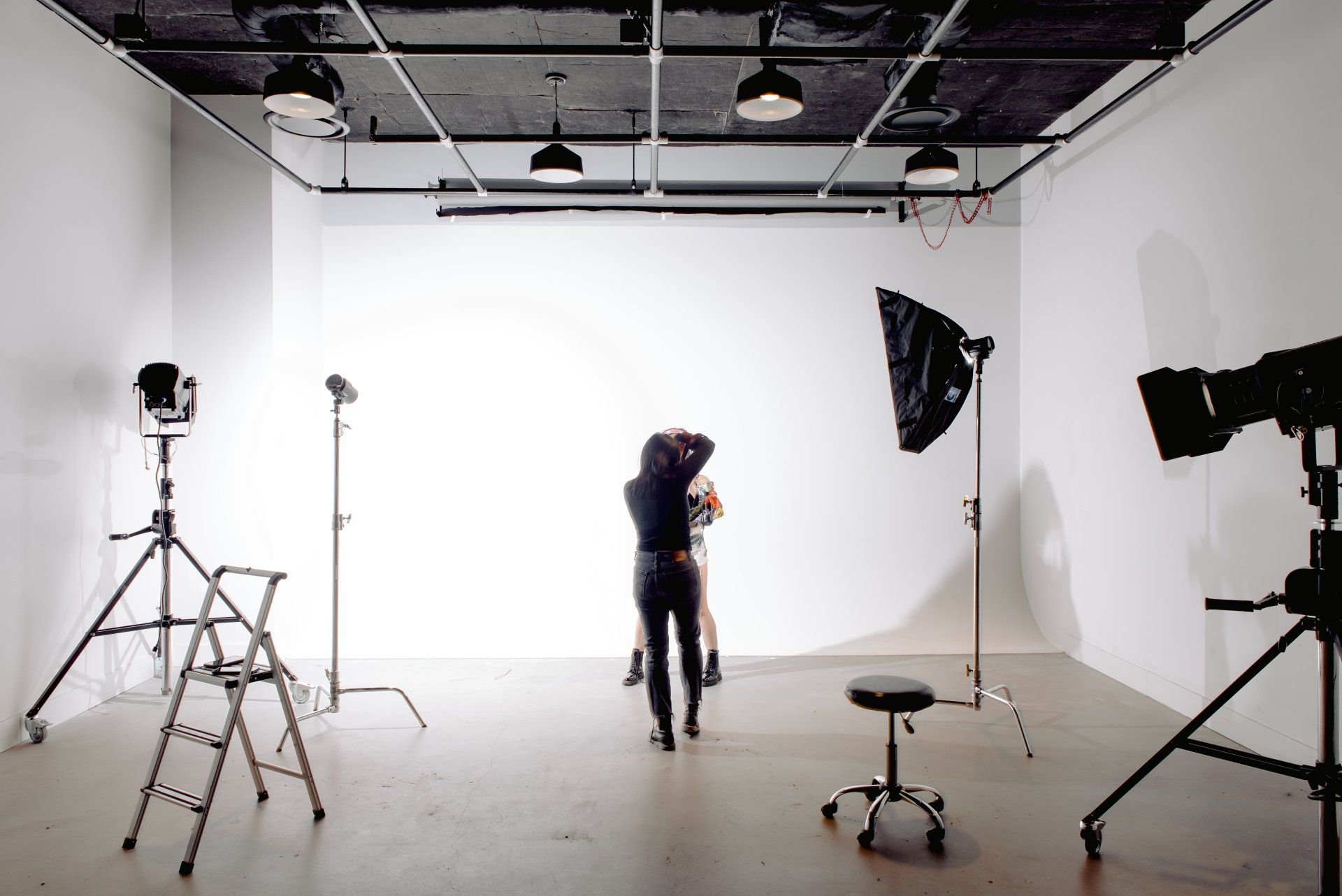
4. Point Lighting
3-point lighting means strategically positioning three lights around your subject so you can manage lighting in any scene concerning shadows. There are three types of this setup; “key,” “fill,” and “back.” The key light is the principal source of light directed toward the film character; from behind eliminates shadows created by the primary source while contributing depth and, thus, separation.
Components
Key Light: Key light acts as the primary illumination source on a subject, determining how bright or dark it should be.
Fill Light: It falls on one side of the face to eliminate harsh shadows from crucial light.
Background Light: Background light ensures enough separation between the subject’s body and the scenery behind it.
The leading light of a film determines the overall brightness and mood of the scene.
The fill light is responsible for balancing out any shadows caused by the primary lighting source; thus, it results in a more even illumination of the subject matter.
The background light contributes depth and separation, revealing what is behind them by illuminating what is behind them in films.
Advantages
3-point lighting allows control over the lighting in a scene, giving you that professional and polished look. It adds dimension, depth, and visual interest to videos. This setup can be modified to fit different shooting conditions and styles, which makes it popular among many videographers.
Disadvantages
Setting up three-point lighting takes more time and effort than other simpler setups. One may use more accessories and space to achieve desired lighting effects. Additionally, achieving an appropriate balance between these three lights might require practice and trial and error.
Example: Neewer 660 LED Video Light Kit:
This is a complete set of lights with several LEDs, each of which helps set up the 3-point light system. This kit offers adjustable brightness levels and color temperature settings, making it a flexible option for various video productions. They are often used by commercial video producers who want to create professional-looking scenes for their projects.
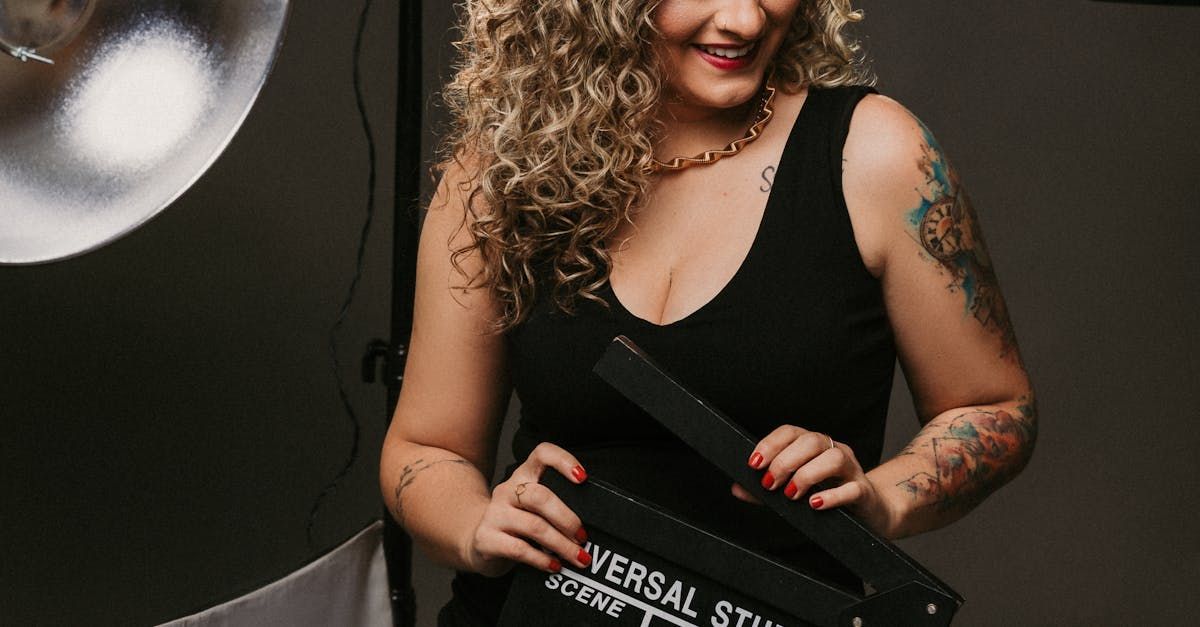
5. Umbrellas
In video production, umbrellas do not exist mainly to shield the people using them from rain but rather to soften and spread light. Among other things, they are widely used as inexpensive and versatile lighting modifiers to enhance video quality.
Description and Function
Video lighting umbrellas, on the other hand, typically have a reflective or translucent material that is attached to a skeletal frame. Reflective ones bounce off light from their surface, while the translucent type diffuses light, resulting in a softer glow. They help to scatter light evenly, thereby decreasing harsh shadows while at the same time giving subjects a better quality of illumination.
Components
Reflective Umbrella: Reflects light off its surface for indirect and more diffused lighting. Reflective umbrellas focus more on the subject while bouncing lights from walls for softer effects.
Translucent Umbrella: Spreads soft, even illumination by defusing the light. Translucent umbrellas are great at softening bright lights and providing more flattering images of subjects.
Advantages
They come with cheap price tags and are easy to use, thus most suitable for new entrants into videography. The reflector can soften and widen the spotlight beam, ensuring perfect photoshoots.
On top of that, this umbrella is lightweight; hence, it is easy to carry one around during shooting sessions, allowing it to be set up within minutes wherever you want to film from.
Disadvantages
Umbrellas may need more control over directionality or intensity than other lighting modifiers, even though they are versatile and low-cost. Wind or movement can also damage their contents, causing unwanted light spillages. Similarly, these tools may need to be more accurate in terms of precision or focusedness than, say, softboxes or grids, which are widely available nowadays.
Example: Neewer Photography Studio Lighting Kit with Umbrellas:
The Neewer Photography Studio Lighting Kit uses umbrellas to diffuse and reflect light during video production. This kit comes with a combination of reflective and translucent umbrellas, light stands, and adjustable bulbs, which is a complete setup for enhancing the quality of video lighting. This is usually the best choice for beginners and hobbyists needing an adaptable and affordable umbrella to improve their video lighting setup.
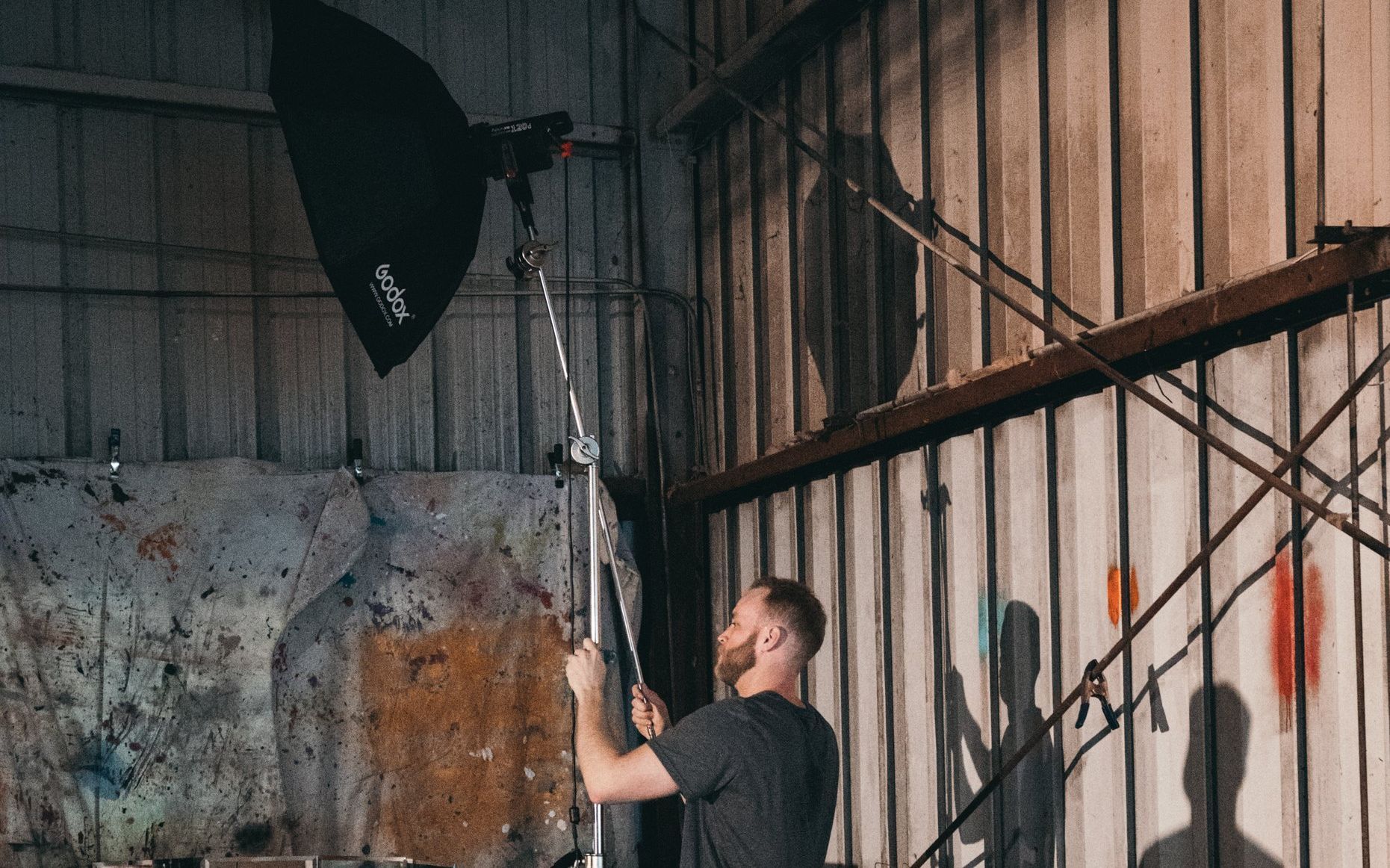
6. Reflectors
Reflectors are tools used in video production to bounce or redirect light, fill shadows, enhance illumination, or balance out lighting arrangements. They come in different shapes, sizes, and colors to enable various lighting effects and improve the quality of light in videos.
Description and Function
Reflectors are generally flat surfaces made from flexible materials of silver, gold, white, or black reflector materials. They work by bouncing light onto the subject to fill in shadows or redirect light for a more flattering and even illumination. Reflectors are often used as helpmeet to natural or artificial lights in videos.
Components
Silver Reflector: A bright, crisp reflection that increases overall brightness.
Gold Reflector: A warm golden glow adds warmth and richness to the lighting.
White Reflector: Soft, neutral reflection creates natural, even illumination.
Black Reflector: Absorbs the light, thus creating shadows or reducing unwanted reflections.
Advantages
Reflector’s portability and weightlessness make them cheap accessories for enhancing your films’ general brightness levels.
They may be used under bright sunlight when shooting outside home-based movies and placed on any side above your head indoors.
These devices can be employed differently depending on the film shot type being taken under various climatic conditions, thus affecting different styles of illumination within those films.
Disadvantages
Using reflectors may require another person to hold or position them during shooting. In addition, the degree of control over the light direction and intensity is much less than with other lighting modifiers.
Finally, effective use of reflectors for lighting purposes may necessitate some experimentation and practice to achieve the required setting results.
Example: Neewer 5-in-1 Collapsible Multi-Disc Light Reflector:
This is one of the popular choices among videographers and photographers. It can form various lighting patterns because it can be folded easily when not in use.
You can fold this video lighting equipment and take it wherever you go if you want to improve the lighting of your videos using this umbrella tool.
7. Fresnel Lights
Fresnel lights are often used for media production and photography. They are called so after the type of lens they have; the Fresnel lens helps direct and focus on the light beam produced by Fresnel lights. These lights produce an intense beam with soft edges and are found in many illumination scenarios.
Description and Function:
It mainly consists of a lamp, a reflector, and a Fresnel lens. The Fresnel lens controls the spread of light; thus, adjustable beam angles and focusing capabilities become possible. They are frequently employed to create dramatic lighting effects that highlight specific areas or perform essential lighting during video shoots.
Components:
Lamp: Provides illumination.
The reflector’s function is to help focus and shape the light rays given off.
Fresnel Lens: This is Utilized to regulate the beam of light and focal point. Fresnel lights are recognized for their ability to focus their beams with a soft edge, making them great for spotlights or creating special effects.
Advantages
Fresnel lights have a focused output controlled by the user, thus making them ideal for spotlights or achieving specific lighting effects.
They are versatile and can be used in various video production settings to achieve different looks and moods. Also, these lights are durable and long-lasting, ensuring consistent performance over time.
Disadvantages
Though Fresnel lights enable precise light adjustment on filming occasions, they might turn out costlier than other types of lights.
Adjusting and focusing the light effectively may require more setup time and expertise. Additionally, during operation, they generate heat that must be considered when handling them so as not to get burned or overheated.
Example: Aputure LS C300d II Fresnel Light
For professional video production purposes, where it provides versatile illumination support, Aputure LS C300d II Fresnel Light serves as robust video lighting equipment. It has an adjustable angle lens (fresnel) that creates laser-like beams with a powerful output. This lamp is preferred by filmmakers who want intense dramatic effects in different shoot scenarios.
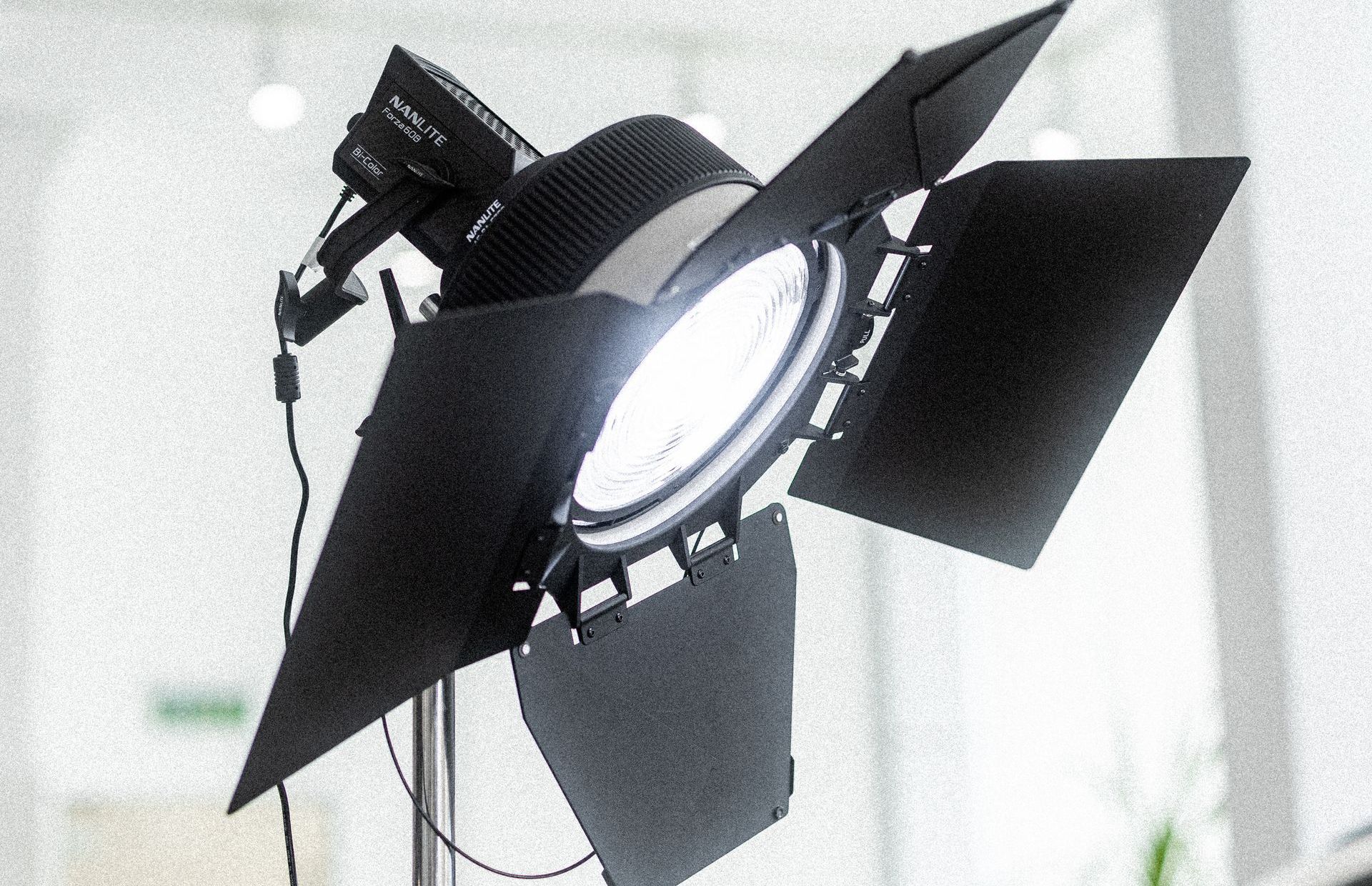
Essential Components of a Video Lighting Setup
It takes the right supplies to make your video well-lit. Here are some key components you will need for your introductory video lighting setup:
Key Light
This is the primary source of light that illuminates your subject when filming. It offers the primary illumination in video recording and determines how bright the scene will be overall; also, it sets the mood for the video.
Fill Light
The fill light helps to reduce shadows created by the key light. Doing so helps to even out the lighting around your subject.
Backlight
Located behind a subject, this light (also called rim light) helps add depth and separation by illuminating from behind. Its function is to make every video shot three-dimensional and prevent any chance of merging between an object and its surrounding environment.
Light Stands
These stands are essential to hold up your lights at specific heights or angles. Not only do they provide stability, but they also allow you to modify your lighting arrangement based on what you desire.
Modifiers (such as Softboxes, Umbrellas, or Reflectors)
Modifiers help control the direction of lighting coming out of these lights and their quality. Softboxes diffuse light for a softer look, while umbrellas slightly bounce or diffuse light, and reflectors bounce off light, filling shadows or redirecting it back.
Lighting Control Tools (such as Dimmers or Barn Doors)
Tools for controlling lightning can be used when one wants to adjust intensity, direction, and spread. For example, some dimmers regulate how ‘bright’ something appears, while barn doors can be employed in shaping/harnessing light beams.
Power Source
It would be best to have enough power supply near electrical outlets for convenient setups with portable options like battery-powered solutions.
Lighting Accessories (such as Gels or Diffusion Materials)
Gels add more flavor if need be; for instance, color correction gels remove specific colors from a scene, whereas creative effect gels add extra color variation. There are also diffusion materials that can soften harsh lighting conditions, though not altering their brightness.
Therefore, the best way to light your subjects properly, create visually appealing videos, and control lighting to acquire the desired look is to have these essential components in your video lighting equipment.
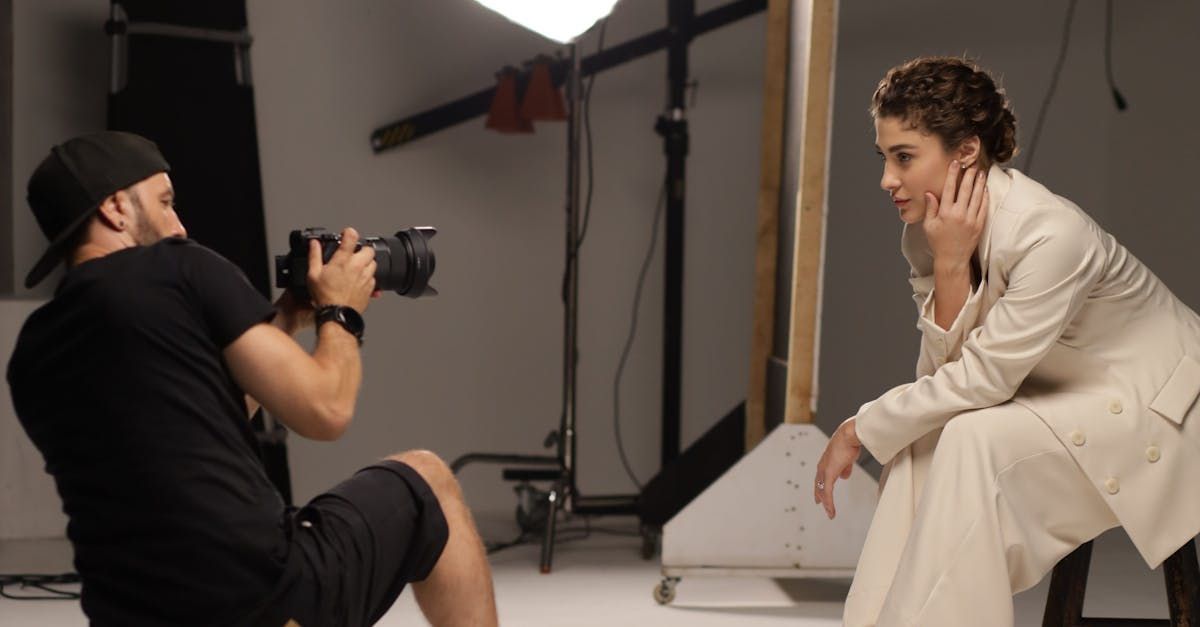
Mistakes not to make when setting up video lighting equipment
Insufficient Lighting
One mistake that people make is using too little light. Inadequate lighting will result in dark, grainy footage with low visibility. Make use of enough light in order for you to properly illuminate your subjects.
Harsh Shadows
Harsh shadows are unsightly and distracting in a video. Avoid putting lights directly above or below your subject, as this will create harsh shadows on their face or backgrounds. Soften such shadows by using diffusers or altering the angle of your lights.
Uneven Lighting
Your amateurish video can be ruined by uneven lighting. Ensure a balance between the key, fill, and backlight to give a uniform effect throughout the scene. Achieve an even look by slightly moving around and changing the intensity of your floodlights.
Color Temperature Mismatch
You will see a nonuniform image in your film when various lights have different color temperatures. Do not forget to set one color temperature for all lights or use color correction gels for a uniform lighting appearance.
Overexposure or Underexposure
Footage that is either too bright or too dark can affect the message it has. To avoid issues with underexposure and overexposure, change the brightness levels of all camera settings and the lights accordingly.
Ignoring White Balance
This leads to unnatural colors in videos as regards the white balance setting. Set the correct white balance on the camera to accurately represent colors under different lighting conditions.
Cluttered Backgrounds
A busy background takes focus away from one’s primary subject matter. When positioning lighting, ensure that backgrounds are enhanced rather than competed with them.
Final Words on Video Lighting Equipment
So, to have great footage, you should understand video lighting equipment. It is possible to make your videos more professional and engaging by studying different types of lighting and how they are correctly set up. Remember that proper illumination greatly affects your audience's overall look and feel. We will gladly assist you if you need help on this topic or want to consult us about your video production.

Get total clarity on your video marketing and paid media with our FREE comprehensive data audit.

